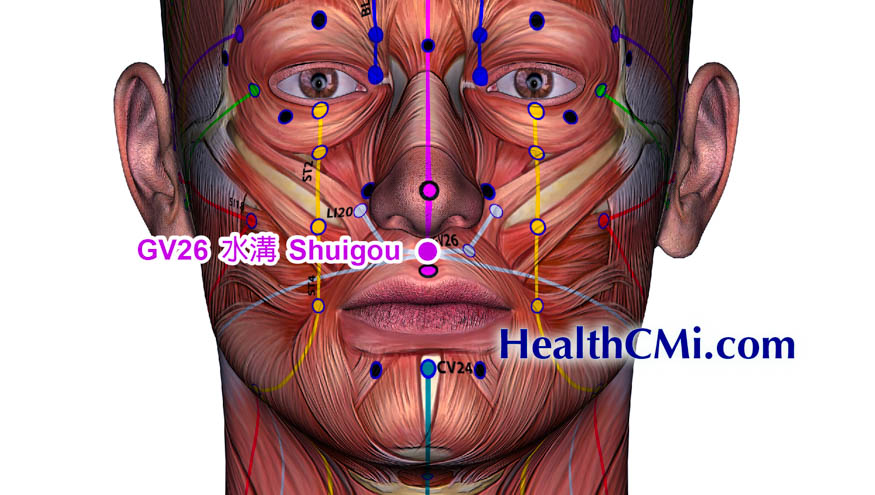
Acupuncture improves outcomes for patients after a stroke. Research shows that acupuncture inhibits cytotoxic edema, improves nerve function and overall physical condition, and benefits mental well-being for patients after having an intracerebral hemorrhage (ICH). This is a type of stroke wherein there is bleeding into brain tissues. ICH occurs in over 10% of all strokes and the mortality rate is over 50%, with approximately half the deaths occurring within two days.
Acupuncture department hospital researchers from Nanjing University of Traditional Chinese Medicine conducted a clinical trial using a sample of 72 ICH patients. A comparison of regular pharmaceutical protocols with that of an integral approach combining routine biomedical care with electroacupuncture was documented. The results of the experiment indicate that the integrated protocol produces superior outcomes. [1]
Patients receiving electroacupuncture had greater restoration of nerve function plus improved physical independence and mental well-being. Importantly, patients receiving acupuncture had improved aquaporin-4 (AQP4) levels. This is significant because during the formation of cerebral edema, aquaporin-4 contributes to astrocyte swelling, often referred to as cytotoxic swelling. Research indicates that early stage development of cytotoxic edema may be abated by AQP4 inhibition. All cases in this study were early stage cases.
In some cases, later stage reabsorption of edema in ICH patients may also benefit from AQP4 upregulation. This is significant since acupuncture stimulates homeostatic responses and does not specifically raise or lower AQP4 levels. The beneficial downregulation by acupuncture of AQP4 levels observed in the study was a healthy response to the the ICH stage.
This has broader implications beyond the scope of this clinical trial. Since specific biochemicals may be beneficial or harmful dependent upon dosage and circumstance, the study points to a new frontier in medicine. The goal for improving health by regulating biochemicals in the body may be to stimulate the body’s natural homeostatic and healing responses.
The National Institute of Health stroke scale (NIHSSL) was utilized as the principal observational and measurement parameter in the clinical trial. Levels of AQP4, a key factor in brain water balance, along with modified Barthel index (MBI) and mini-mental state examination (MMSE) were also recorded and analyzed. All figures presented more significant improvement in the integral group. NIHSSL dropped from 9.84 ±1.27 to 4.91 ±1.59 and AQP4 declined from 0.359 ±0.011 to 0.03 7±0.011.
Seventy-two cases with were recruited into the study. CT or MRI scans confirmed ICH. National Institute of Health stroke scale (NIHSS) scores were below 15 points at the outset. The amount of cerebral hemorrhage was less than 9 ml. All cases were initial onset patients. Patients were randomized into a routine biomedicine treatment control group and an electroacupuncture integral group, with 36 patients in each group.
Two cases dropped in the control group while four in the integral group. In the control group, 24 were males and 8 were females. Patients age ranged from 39 to 70 years. Mean age was 57 ±10 years. In the integral group, 24 were males and 10 were females. Patients age ranged from 45 to 70 years. Mean age was 60 ±8 years. In both groups, course of condition was one to four days. Average course was one day.
Patients in the routine care group were bedridden for two weeks, receiving medications to control internal bleeding, blood pressure and nerve edema management. Routine care with medications also addressed intracranial pressure, oxygen levels, and sedation. Fluid electrolyte balance restoration was carefully controlled.
In addition to the above treatment, patients in the integrated group were administered electroacupuncture in a supine position. Needles (0.30 × 40 mm) were sterilized and inserted at the following points:
- GV26 (Shuigou)
- PC6 (Neiguan)
- SP6 (Sanyinjiao)
- HT1 (Jiquan)
- BL40 (Weizhong)
- LU5 (Chize)
For Shuigou, needles were obliquely inserted toward the nasal septum at a depth of 10 to 15 mm. For Neiguan and Weizhong, perpendicular insertion technique was applied. Insertion length was 25 to 30 mm.
For Chize, perpendicular insertion technique was applied. Insertion length was 10 to 15 mm. For Sanyinjiao, needles were obliquely inserted to a depth of 25 to 30 mm. For Jiquan, needles were inserted perpendicularly and insertion length was 25 to 35 mm.
Sanyinjiao and Weizhong received a reinforcing manipulation while Jiquan and Chize received attenuating manipulation. The remainder received a mild reinforcing-attenuating method. Upon arrival of deqi, an electroacupuncture device was employed to provide a disperse-dense wave (2/100 Hz). Bilateral Neiguan points were linked to the negative electrode while Sanyinjiao the positive. Needle retention time was 30 minutes. Treatment was conducted on a daily basis for six consecutive days per week, followed by a one-day interval. A total of a two-week treatment was administered.
Reference:
1. Ni Siming, Lv Hequn, Xu Shuying, Peng Yongjun, Efficacy and Effects of Electroacupunture on Intracerebral Haemorrhage Patients Serum AQP4, Chinese Acupuncture & Moxibustion, 2023-07-20.


